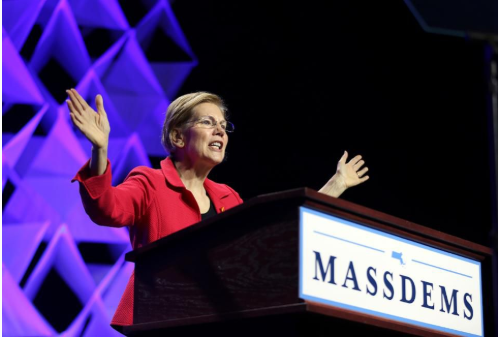
Rural hospitals have been closing at alarming rates, no longer able to bring in enough revenue to serve their communities. Fortunately, there is something both state and federal legislators can do to keep local hospitals open.
State governments: if you haven’t expanded Medicaid, do it now. Under the Affordable Care Act, most of the cost of that expansion will be borne by the federal government. If you don’t expand, then don’t be surprised if your constituents blame you when their local hospitals close. Without Medicaid to cover people’s expenses, hospitals lose money caring for uninsured patients who can’t pay their bills.
The federal government: Congress needs to provide financial help to hospitals that serve large uninsured populations. That’s not an unrealistic expectation. The federal government used to provide such assistance, called DSH (or “dish” payments), but those payments were phased out with the passage of the Affordable Care Act, under the (now false) assumption that every state would expand Medicaid and, thus, there wouldn’t be many uninsured patients.
(To read the rest of the article, please visit Forbes.)
How Suntanning Both Increases And Reduces Your Chance Of Dying From Melanoma — A Mystery Solved

Quick quiz question: two people are diagnosed with melanoma – Sarah Sunburn, an adamant sun-worshipper, and Paula Pale-All-The-Time, a fanatical sun-avoider. Who is more likely to die of the disease?
The answer is pale-faced Paula. Surprised? Let me unpack this mystery and explain why sun exposure simultaneously kills people, while making the cancers they are diagnosed with appear to be less life-threatening.
I will start with what you probably know already. Melanoma is a potentially life-threatening skin cancer. It occurs usually as a result of genetic risk, including fair complexion and sun exposure. (I lost my beloved redheaded aunt to melanoma when she was tragically young.) All else equal, people who spend more time in the sun, or in tanning booths, are more likely to die of melanoma, with people of fair complexion especially at risk.
Now here is the part that you might find confusing: among people diagnosed with melanoma, those with a history of lots of sun exposure and fair complexion are less likely to die. That’s right: sun exposure makes people both more and less likely to die of melanoma. How can that be?
It’s the difference between the rate of death from melanoma and the death rate of people diagnosed with melanoma.
(To read the rest of the article, please visit Forbes.)
A Moderate Republican Plan To Fix American Healthcare: 'Medicare For All'?

Everyone thinks of “Medicare for All” as a liberal idea, an extremely liberal one embraced by the socialist wing of the Democratic Party. It’s an idea Democrats were hesitant to embrace in the Obama era, for being too far out of mainstream political thought. It was thought of as an idea that was too easy to demonize as socialism.
What everyone seems to be forgetting is that “Medicare for All” could end up being a politically moderate way to bring more market competition to the U.S. healthcare system. Think I’m kidding? Give me a chance to explain myself.
Deciding Whether Medicare is “Socialism”
When we call a healthcare system socialized, we need to clarify what part of the system we are talking about. For example, Canada has a socialized payment system, which they (unoriginally) call Medicare. But Canada doesn’t have a socialized provider system. Instead, Canadian hospitals and clinicians work in private enterprises, billing Medicare for their services.
By contrast, the United Kingdom has a fully socialized system, with payment coming from the government, providers working with government employees, and hospitals and clinics owned and operated by the government.
In keeping with this view of socialism, “Medicare for All” is not the same as a fully socialized healthcare system. Under Medicare, providers are still free to operate as private enterprises, and can decide whether to operate as nonprofit organizations – like the Mayo Clinic – or as for-profit ones – like the Hospital Corporation of America.
Even more important, we can’t even call “Medicare for All” a socialized payment system. I’ll explain more about that in a short while.
(To read the rest of the article, please visit Forbes.)
Obamacare: Death By A Thousand Advertising Cuts

Obamacare is still the law of the land, but the Trump administration and Republicans in Congress are determined to undermine the law in the hope it will cease to function. One of the strategies is to cut advertising funding for ACA insurance plans. If a recent study is any indication, that strategy might work. One of the key components of Obamacare, you see, was creation of a marketplace where people could shop for (often subsidized) insurance plans. The success of this marketplace depends on bringing in enough customers, especially relatively healthy ones, to cover the cost of caring for people with expensive illnesses. Advertising is key in bringing customers to this marketplace. Under the Obama administration, this advertising budget exceeded $100 million a year. President Trump is cutting the budget 90%.
Will less advertising mean fewer customers?
(To read the rest of the article, please visit Forbes.)
Measures of Physician Quality Don't Measure Up

Physician reimbursement increasingly depends upon measures of healthcare quality. Physicians who fall short on quality measures now face financial penalties. But it might be quality measures, themselves, that are falling short, according to a study conducted by the American College Physicians.
The study involved a panel of people with expertise in evidence-based medicine. Panelists were asked to evaluate the validity of quality measures being used by either Medicare, the National Committee for Quality Assurance, or the National Quality Forum. It is typically measures from these three groups that are used to determine physician quality report cards, and Medicare plans to use its measures to influence reimbursement for individual clinicians.
The panel evaluated the validity of these measures using a modified version of a RAND/UCLA method that has been widely accepted as the best way to assess the strength of evidence for healthcare interventions. That method, developed in the 1980s, combines literature review and synthesis, multiple rounds of expert panel ratings, and retrospective comparison of evidence with clinical records, when feasible. The method isn’t perfect. But its the best we’ve got by a long shot.
(To read the rest of the article, please visit Forbes.)
Is Your Boss Discriminating Against You Because You Smoke?

Obamacare gave employers permission to charge smokers up to 50% more for health insurance, as a way to incentivize healthier behavior. But to make sure smokers had a fair chance to avoid these penalties, the law required employers to provide tobacco cessation programs to anyone facing such a surcharge.
Almost half of the companies who charge smokers more for health insurance are breaking the law.
That’s a conclusion reached by a team of researchers who studied the health benefits employers offered to their employees in 2016. The team evaluated almost 2,000 randomly selected companies. They honed in on small employers, those with less than about 50 or 100 employees (the number varied between 50 and 100 across states, depending on the specifics of how those states regulate insurance companies.)
What did they find?
(To read the rest of this article, please visit Forbes.)
Medical Bankruptcy Is Much Less Common Than Elizabeth Warren Tells You

Elizabeth Warren describes medical bills as “the leading cause of personal bankruptcy” in the United States. She bases that opinion in part on her own research, in which she and her collaborators surveyed people who had experienced personal bankruptcy, asked them whether they’d experienced health-related financial distress, and concluded that 60% of all bankruptcies in the U.S. result from illness or injury.
An article in the New England Journal of Medicine this spring convincingly argued that Warren’s estimates were seriously exaggerated due to faulty research methods. I’ll briefly summarize that critique. But more importantly, I’ll explain why even revised bankruptcy estimates still overstate the contribution of healthcare costs to American bankruptcy rates.
Here is a quick review of the issue.
(To read the rest of this article, please visit Forbes.)
Five Warning Signs Your Doctor Was Too Quick To Diagnose You With High Blood Pressure

High blood pressure is the silent killer. It puts people at risk for heart attacks, strokes, vascular disease, kidney failure…it is basically really bad to have longstanding, undertreated high blood pressure.
But it is also harmful to be told you have high blood pressure when you don’t, and to be treated for high blood pressure when that treatment won’t benefit you. So when your doctor diagnoses you with high blood pressure, it is good to make sure you have earned the diagnosis. Let me lay out a few facts about high blood pressure and then suggest several questions to ask your doctor, so you get the treatment that is best for you.
The background: high blood pressure, also known as hypertension, is a chronic condition, characterized by regularly elevated blood pressure readings. If you have occasional blood pressure readings above normal, that doesn’t mean you necessarily have hypertension. But if your blood pressure runs too high, too often, all that pressure on the walls of your arteries can do serious damage.
Blood pressure is a measure of the force that blood exerts on your arteries as it is propelled through them by your heart. Think of a balloon with a small amount of air in it: there is not much air pressing out on the balloon. Blow it up more, and the balloon becomes more taut. That is what happens to your arteries with each beat of your heart. Your heart ventricles contract, forcing blood into your arteries, stretching them under all that forward-flowing pressure. The heart now relaxes and refills with blood, and the pressure inside your arteries goes down. That is why blood pressure is made up of two numbers: the bigger one that follows after heart contraction, and the smaller one that coincides with heart relaxation.
So what blood pressure readings are too high to have for too long?
(To read the rest of this article, please visit Forbes.)
Sleepless in the Hospital

Here’s a great New York Times article, highlighting some of the ways people like me think hospitals should help their patients sleep:
If part of a hospital stay is to recover from a procedure or illness, why is it so hard to get any rest?
There is more noise and light than is conducive for sleep. And nurses and others visit frequently to give medications, take vitals, draw blood or perform tests and checkups — in many cases waking patients to do so.
Some monitoring is necessary, of course. Medication must be given; some vital signs do need to be checked. And frequent monitoring is warranted for some patients — such as those in intensive care units. But others are best left mostly alone. Yet many hospitals don’t distinguish between the two, disrupting everyone on a predefined schedule.
Peter Ubel understands the problem as both a physician and patient. When he spent a night in the hospital recovering from surgery in 2013, he was interrupted multiple times by blood draws, vital sign checks, other lab tests, as well as by the beeping of machines. “Not an hour went by without some kind of disruption,” said Dr. Ubel, a physician with Duke University. “It’s a terrible way to start recovery.”
To read the rest of this piece, please visit the The New York Times.
A Patient Complained about the Cost of Her Medical Care. Here's How Her Doctor Responded.

The oncologist had prescribed Xgeva hoping it would strengthen her bones while also delaying the progression of Angela Kahn’s breast cancer. But Kahn (a pseudonym) couldn’t get over the price of the drug. Before the oncologist had a chance to ask how she was feeling, she blurted out that the medication cost “$15,000 a shot.” “That’s crazy,” the oncologist replied, continuing by saying the price “fits right in with the rest of the insanity” of U.S. healthcare pricing. At that price, Kahn concluded, “I don’t think I should get it.”
The oncologist assured her “You’re getting it,” and they both laughed.
Not that either thought Xgeva’s price was a laughing matter. In fact, like many medications, Xgeva costs much more in the U.S. than in any other developed countries, with a single injection costing more than $2,000.
There’s too many reasons for these high prices to delve into them in the space of a short essay. Instead, I want to show how the insanity of American healthcare prices played out in this one, real oncology appointment. (Note: The appointment was recorded by a marketing company, Verilogue Inc., with the permission of the doctor and patient. I gained access to an anonymized transcript of the appointment for a research project approved by the Duke University IRB.)
After assuring Kahn that she’d remain on the Xgeva, her oncologist explained how he believes healthcare pricing plays out in the U.S. “It’s totally outrageous. What usually happens is the hospital or the clinic will charge 300 times what they think they can get, and the insurance company pays 1/20th of the original.”
“Oh, okay,” Kahn replied, with a touch of confusion.
“So it’s just a game, it’s a total horrible game,” the oncologist continued. “That’s crazy,” Kahn reiterated.
(To read the rest of this article, please visit Forbes.)
